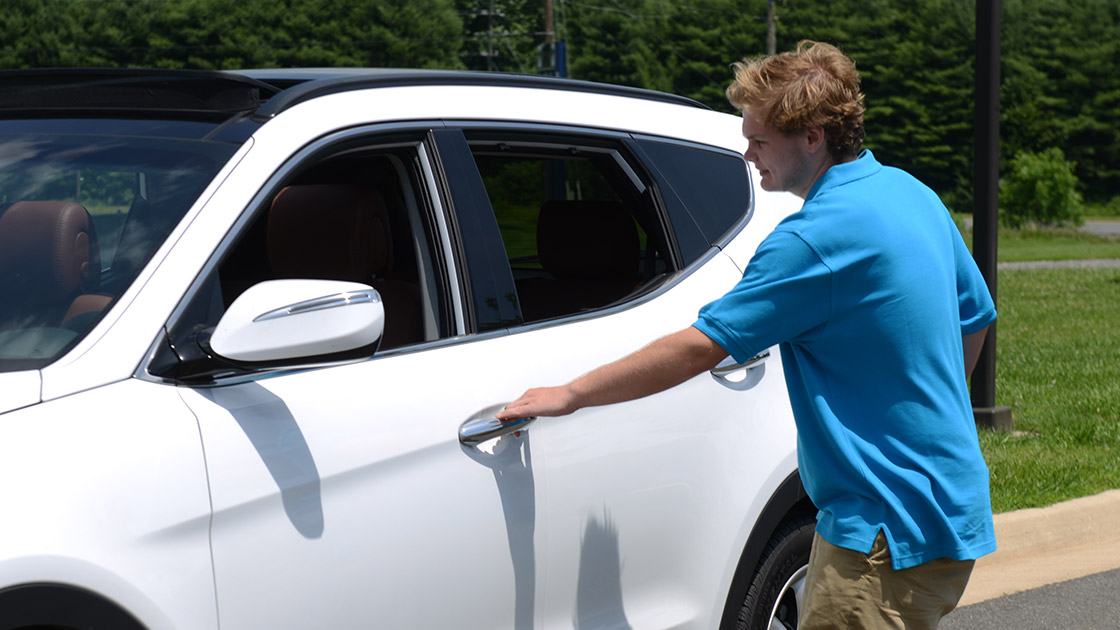Vehicle choice can exacerbate teen drivers' risk
July 16, 2014

Teen drivers are at greater risk of crashing no matter what they drive. The risk is exacerbated when young drivers get behind the wheel of a sports car or a small vehicle, HLDI first showed in 2011. A new report covering 2000-13 models during calendar years 2008-12 confirms that thesis.
Meanwhile, two IIHS studies show that teenagers are more likely than other drivers to have the least safe types of vehicles.
In the new HLDI study, analysts looked at how the claim rate under collision coverage, which pays for crash damage to the insured vehicle, varies depending on the size and class of vehicle for two groups of drivers — those ages 15-17 and those ages 35-50. Both groups saw variation, but it was much more pronounced for teenagers. Teen claim frequency ranged from 15.4 claims per 100 insured vehicle years for small two-door cars to 5.4 for very large SUVs and 3.2 for large cargo/passenger vans, which few teens drive. (An insured vehicle year is one vehicle insured for one year, two vehicles insured for six months, etc.) In contrast, for the 35-50-year-old group, claim frequency ranged from 7.5 for very large luxury cars to 3.4 for large cargo/passenger vans.
The ratio of teen frequency to frequency for 35-50-year-old drivers shows how much more risky each of the vehicle types are for teens. Teenagers file claims at more than twice the rate of 35-50 year-olds for small two-door cars and many other small and mini vehicle types. Midsize sports cars have the largest variation: Teens are 2.6 times as likely to file claims as 35-50 year-olds.
Sports cars and other high-horsepower vehicles tempt teenagers to drive fast and aggressively. It's not entirely clear why small cars and minicars have high crash rates, but their greater maneuverability may encourage young drivers to make sudden moves. In addition, cars with shorter wheelbases are less stable and therefore less forgiving when drivers make mistakes.
Small cars and minicars are a double-whammy. Not only are teens more likely to crash them, they also don't offer much protection when a crash occurs because of their minimal weight and small crush zone.
The cars teens drive
Teenagers are likely to drive many of the vehicles that are most dangerous for them. In a national phone survey conducted for IIHS of 500 parents of teen drivers, minicars or small cars were the most popular type of vehicle to buy for a teen, with 28 percent of those who purchased a vehicle for their teenager buying from this category. A little more than half of newly purchased vehicles were from the 2006 model year or earlier. That's a problem because older vehicles are much less likely to have safety features such as electronic stability control (ESC) and side airbags.
Forty-three percent of parents said the vehicle their child drives was purchased around the time the teenager began driving, while 57 percent said it was a vehicle the family had owned previously. Teenagers who drove a vehicle that the family already owned were even more likely to drive an older vehicle: Two-thirds of those parents said the vehicle was from 2006 or earlier.
A separate IIHS study shows that teenagers killed in crashes are more likely than adults to have been behind the wheel of small vehicles and older vehicles. Among fatally injured drivers ages 15-17 during 2008-12, 29 percent were in minicars or small cars, while 20 percent of fatally injured drivers ages 35-50 were. Eighty-two percent of the young teen drivers were in vehicles that were at least 6 years old, compared with 77 percent of those in the adult group.
"It's understandable that many parents don't trust their children with an expensive new vehicle, so they give them an old car or buy the cheapest new car they can find," says Anne McCartt, the Institute's senior vice president for research. "What they probably don't realize is that they are compromising their teenagers' safety in the process."
Among survey respondents, safety ranked highest among the reasons for choosing a particular vehicle. Most parents knew that a midsize or larger vehicle was safer than a small one, but their knowledge about which safety features to seek out wasn't very current. When asked what safety features they insisted on for their teen driver, people most frequently mentioned frontal airbags and safety belts. Only 5 percent of respondents mentioned ESC.
Survey of parents of teen drivers:
Types and ages of vehicles teenagers drive
Type and size of teens' vehicles by whether vehicle was purchased or already owned
Model year of teens' vehicles by whether vehicle was purchased or already owned